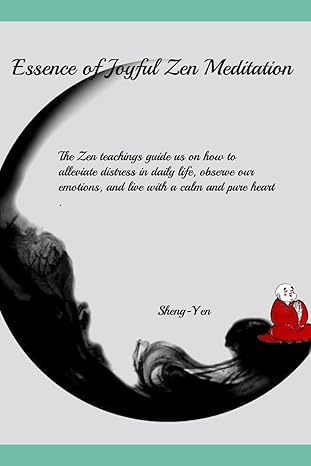The Essence of Joyful Zen Meditation
The book introduces the meditation techniques of Patriarch Bodhidharma, which are succinct and incisive, directly addressing the methods of inner cultivation. It also presents the practice methods of silent illumination meditation and the use of koans in Zen practice. It is a book beneficial for actual practice, using simple and clear methods to adjust one’s state in life, eliminate all troubles and anxieties in life, and achieve a state of inner peace for a happy life!
Erhaps some of you have heard the sayings “Ch’an is not established on words and language” and “Ch’an is a transmission outside conventional teachings.” But if Ch’an does not rely on words, why would anyone want to read a Ch’an book? Isn’t that a contradiction? Although Ch’an is not established on words, it has, among the many sects of Buddhism in China, left behind the most writing. The primary goal of these writings, however, is to show you or teach you that “Ch’an is not established on words and language” and that “Ch’an is a transmission outside the conventional teachings.” So there is a reason for you to read such a book.
The word “Ch’an” can mean enlightenment, and enlightenment can be understood to mean realizing “the first meaning, “or “the ultimate truth.” In Ch’an, there is also what is called “secondary meaning, “or “conventional truth.” Conventional truth can be expressed in words and concepts, but the primary, or ultimate, truth of Ch’an cannot be expressed in words. In the Ch’an tradition, sometimes the ultimate truth is compared to the moon, and the conventional truth compared to a finger pointing at the moon. No one would mistake the finger for the moon. Words, language, ideas, and concepts are like the finger and can express just the conventional truth. These words and concepts only point to the ultimate truth.
The ultimate truth can be called mind, original nature, or Buddha-nature. It is something everyone must experience for himself or herself. It can never be fully described.
What is the source of Ch’an? According to the Ch’an lore, the monk Bodhidharma brought Ch’an from India to China in about 500 C.E., more than a thousand years after Shakyamuni Buddha’s death. But Indian history contains few records of the interim period, so we know relatively little about the origins of Ch’an practice.










